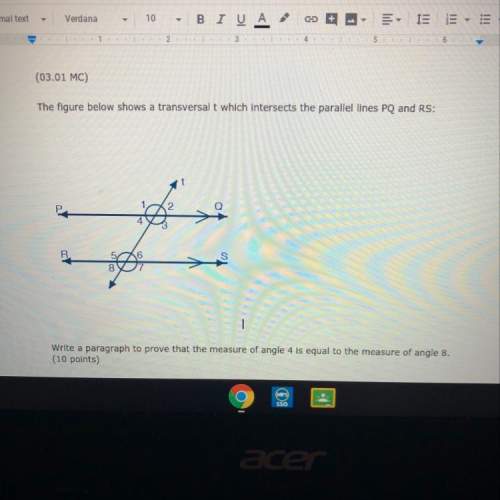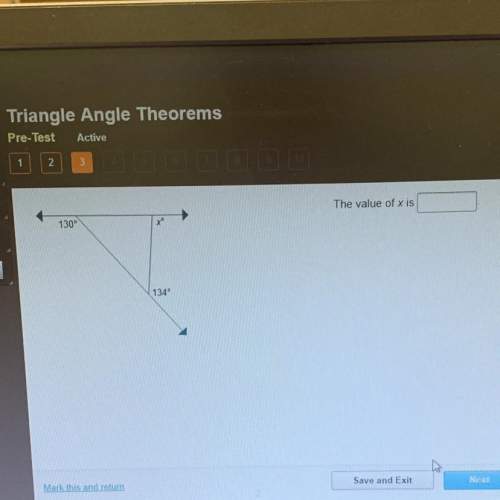
Mathematics, 21.12.2019 02:31, Beth5225
Question 2: prove that the base angles of an isosceles triangle are congruent. be sure to breast name and the appropriate figures.
question 3: prove that opposite angles of a parallelogram are congruent. be sure to create and name the appropriate geometric figures


Answers: 2
Other questions on the subject: Mathematics

Mathematics, 21.06.2019 18:00, keidyhernandezm
List the sides of δrst in in ascending order (shortest to longest) if: a ∠r =x+28°, m∠s = 2x+16°, and m∠t = x+12°
Answers: 2


Mathematics, 21.06.2019 19:30, aljdones
At the beginning of 1974/75,2 years a man invested #2000 in a bank at 12.5% compound interest, if it degree #650 at the end of each two years to pay his son's school fees, after payment of interest to pay his son's school fees, how much did he have left at the beginning of the 1978/79 school year?
Answers: 3

Mathematics, 22.06.2019 03:00, kittenlover5031
In this problem, we explore the effect on the standard deviation of multiplying each data value in a data set by the same constant. consider the data set 14, 6, 8, 15, 15. (a) use the defining formula, the computation formula, or a calculator to compute s. (round your answer to one decimal place.) s = 4.28 (b) multiply each data value by 3 to obtain the new data set 42, 18, 24, 45, 45. compute s. (round your answer to one decimal place.) s = 12.83 (c) compare the results of parts (a) and (b). in general, how does the standard deviation change if each data value is multiplied by a constant c? multiplying each data value by the same constant c results in the standard deviation remaining the same. multiplying each data value by the same constant c results in the standard deviation being |c| times as large. multiplying each data value by the same constant c results in the standard deviation increasing by c units. multiplying each data value by the same constant c results in the standard deviation being |c| times smaller. (d) you recorded the weekly distances you bicycled in miles and computed the standard deviation to be s = 3.8 miles. your friend wants to know the standard deviation in kilometers. do you need to redo all the calculations? yes no given 1 mile ≠1.6 kilometers, what is the standard deviation in kilometers? (enter your answer to two decimal places.)
Answers: 1
Do you know the correct answer?
Question 2: prove that the base angles of an isosceles triangle are congruent. be sure to breast na...
Questions in other subjects:

Chemistry, 08.01.2020 10:31

History, 08.01.2020 10:31



History, 08.01.2020 10:31

English, 08.01.2020 10:31

Health, 08.01.2020 10:31

History, 08.01.2020 10:31

Social Studies, 08.01.2020 10:31








